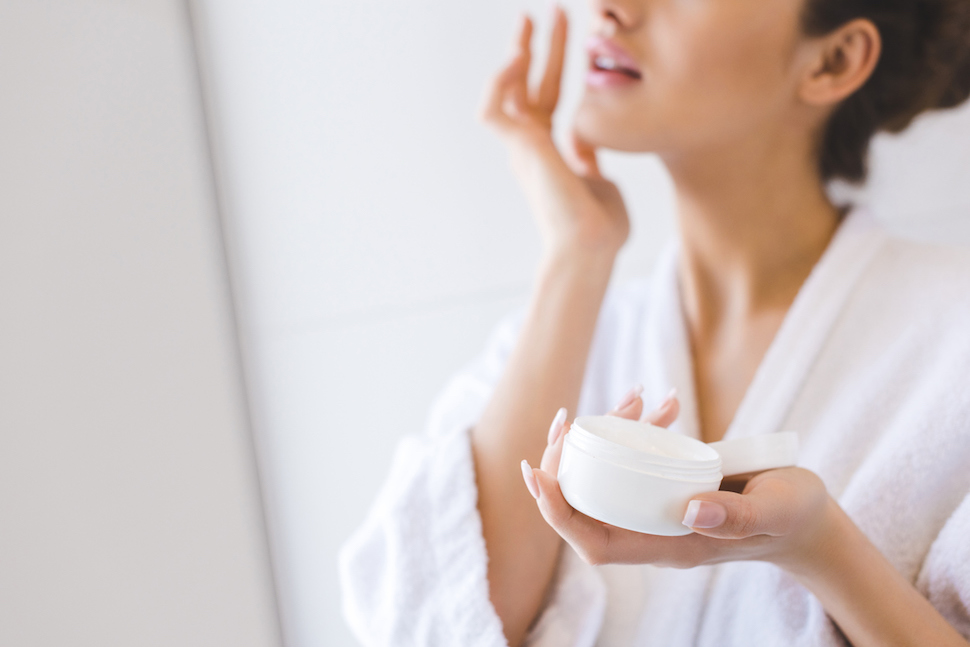
C’mon, fess up: despite slathering yourself with SPF and hiding out under one of those insanely huge (and Instagram-ubiquitous) Jacquemus “La Bomba” straw hats, you still managed to get a teensy-weensy bit of “color” this past summer.
Time to mitigate some of that UV damage with spa treatments and wonder ingredients that reduce inflammation, hydrate parched skin, and slow the roll on sun-induced wrinkling and brown spots.
The spa at Carillon Miami Wellness Resort, which sees its fair share of sun-baked clients, offers several options for getting head-to-toe skin back in shape. While the antioxidant-spiked Repair & Recover facial features organic goji berry and macadamia oil to soften surface crinkling, the Replenishing Wrap boosts elasticity and hydration from the neck down. During the latter treatment, clients lie on the resort’s Dry Float Bed, purported to to zap stress, increase energy, and even help you sleep better that night. Aaaah . . .
A bit further up the Florida coast, at the Seagate Hotel & Spa in Delray Beach, the four-treatment Autumn Awakening package includes a mood-setting complimentary goblet of Pinot Noir alongside an aromatherapy massage, mani-pedi, and an ESPA Optimal Skin Facial. It’s designed to strengthen the skin’s natural moisture barrier, even-out tone, and calm inflammation through a mix of sunflower concentrate, white lupin, and turmeric.
The ultimate objective is having a year-round game plan, both at the spa and at home, so UV damage doesn’t have a chance to accumulate.
Spas in other sun-drenched pockets of the States also specialize in turning back the UV damage clock. At L’Auberge de Sedona, for example, the seasonal Prickly Pear Summer Soother body treatment draws on the multiple skin benefits to be gleaned from the prickly pear cactus, indigenous to the area’s high desert. After skin is gently buffed with a mix of prickly pear essential oil and fine grain salt, it’s hydrated with a blend of prickly pear and pomegranate.
Sensing a theme here? It’s out with the old, flaky skin cells and in with the fresh new stuff.
“At the transition to fall, I like to focus on deep cleansing treatments and light holistic peels,” says spa owner and plant-based skincare purveyor Tammy Fender. “Gently detoxifying the skin removes any summer buildup and prepares the skin to better absorb and receive rich nutrients that help keep the complexion well hydrated and protected during the cooler, drier autumn weather.”
Back at su casa . . .
Since we can’t live at the spa (sigh), it’s smart to arm yourself with intel about which ingredients to look for—and steer clear of—with the products you take back home.
Danielle Gamble, esthetician for the Sisley-Paris spa in New York City, swears by hexylresorcinol, a skin brightener found in the line’s Phyto-Blanc product range. “When performing a post-sun facial, I always use the Phyto Blanc Essence paired with a stabilized vitamin C like our Phyto-Blanc Intensive Serum,” she says.
Gamble’s recommended at-home follow-up: the full 30-day Phyto-Blanc Absolute Lightening Essence treatment, to “even the complexion and visibly reduce dark spots that are the result of sun exposure.”
Esthetician Jess Arnaudin, author of the newly published Plant-Based Beauty: The Essential Guide to Detoxing Your Beauty Routine, has a fondness for good, old-fashioned aloe vera for treating actual sunburns. (Yes, even if in this hyper-aware day and age, those still happen.) “I’ve also experimented at home with freezing hyaluronic acid in an ice mould. It melts into skin on contact and feels amazing.”
Another at-home trick in Arnaudin’s skincare arsenal: “Serum stacking,” which entails layering and massaging one antioxidant-laced, plant-based serum into the skin on top of another. “Bilberry, cranberry seed, red raspberry seed, rosehip, and carrot seed oil all are brightening and help repair sun damage,” she says.
As for the après-sun ingredient no-nos, “acids and peels” top Gamble’s list. And if there’s still tons of early fall sun in your neck of the woods, Arnaudin recommends avoiding “photosensitizing” ingredients that can cause irritation when exposed to ultraviolet rays. These include citrus essential oils (e.g., bergamot, grapefruit, lime, etc.) and a skincare superstar—retinol. “Retinol will make your skin more vulnerable to sun damage,” Arnaudin notes.
The ultimate objective is having a year-round game plan, both at the spa and at home, so UV damage doesn’t have a chance to accumulate.
“Having consistent facials every four to six weeks will help remove dead skin cells caused by sun exposure,” says Kim Krumroy, Miami Carillon’s lead esthetician. “This allows skin to most effectively absorb moisturizing products and increase hydration retention and radiance.”
Still, there’s no need to get too soleil-phobic. After all, you might already be plotting and scheming a mid-winter jaunt to a hot and sunny locale. “Fearing the sun is not the goal,” says Arnaudin. “But playing it smart and thinking about long-term skin health is a powerful paradigm shift.”
Dana Wood
Dana Wood is the Contributing Beauty Editor at InsidersGuidetoSpas.com. She has been writing about beauty and wellness for decades, and no matter how many times she taps the words “hyaluronic acid” or “healing modalities” into her keyboard, it never gets old. Dana spent a total of 20 years at Condé Nast, serving as Beauty Director for W, Cookie, and Brides. A transplanted New Yorker, Dana now lives in St. Petersburg, Florida. Her peak spa experience? Dana says it’s impossible to decide between the Coco-Mango Body Buff at the Driftwood Spa at Jakes in Treasure Beach, Jamaica, The Land of Beautiful Waters Anti-Aging Facial at Four Seasons Nevis, and the 80-minute 5 Senses massage at the Spa by JW in Marco Island, Florida.